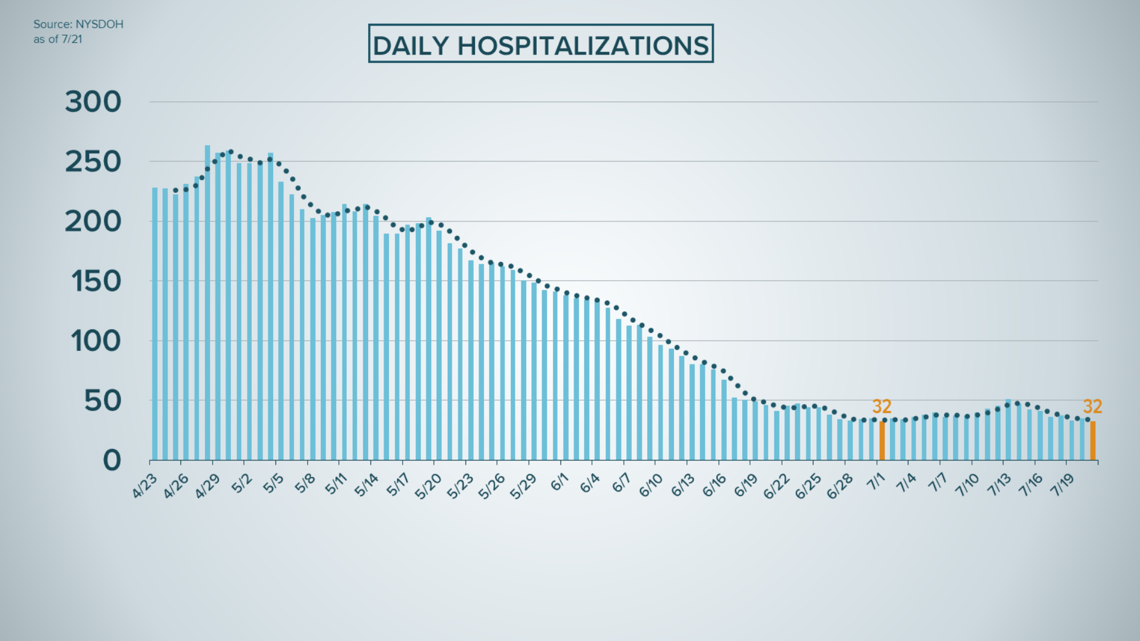BUFFALO, N.Y. — Daily hospitalizations in the WNY Region dropped to 32 on Tuesday, July 21.
That ties the lowest mark since the pandemic began. The five county region, which consists of Erie, Niagara, Chautauqua, Cattaraugus and Allegany counties, also reached 32 daily hospitalizations on July 1.


The percent positive for tests in the region was 0.9%. Out of 4,624 tests, there were 40 positives. The seven-day rolling average for percent positive in the region is now 1.1%.


New York State numbers have continued to trend downward and remain steady since reopening began.
Of the 67,659 tests performed statewide Tuesday, 705 came back positive (1.04%). COVID-19 hospitalizations fell to 714, the lowest for NYS since March 18. Nine people died statewide of COVID-19 related illness.
"Every day, we see the hard work of New Yorkers reflected in our numbers, which continue to steadily decline even as every part of the state has entered Phase Four of our phased, data-driven reopening," New York Governor Andrew Cuomo said. "New Yorkers accomplished that - 19 million people working together because they cared about each other. If we are not careful, we could end up back right where we started, and all that hard work will have been for nothing. We cannot go back to the hell we experienced three months ago, so we must protect the progress we've made and continue to be New York Tough."
Human coronaviruses are usually spread through.
..• The air by coughing or sneezing
• Close personal contact, such as touching or shaking hands
• Touching an object or surface with the virus on it, then touching your mouth, nose or eyes before washing your hands.
Help stop the spread of coronavirus
• Stay home when you are sick.
• Eat and sleep separately from your family members
• Use different utensils and dishes
• Cover your cough or sneeze with your arm, hot your hand.
• If you use a tissue, throw it in the trash.
Lower your risk
• Wash your hands often with soap and water for at least 20 seconds. If soap and water are not available, use an alcohol-based hand sanitizer.
• Avoid touching your eyes, nose, and mouth with unwashed hands.
• Avoid close contact with people who are sick.
• Clean and disinfect frequently touched objects and surfaces.
• If you are 60 or over and have an underlying health condition such as cardiovascular disease, diabetes or respiratory illnesses like asthma or COPD, the World Health Organization advises you to try to avoid crowds or places where you might interact with people who are sick.

